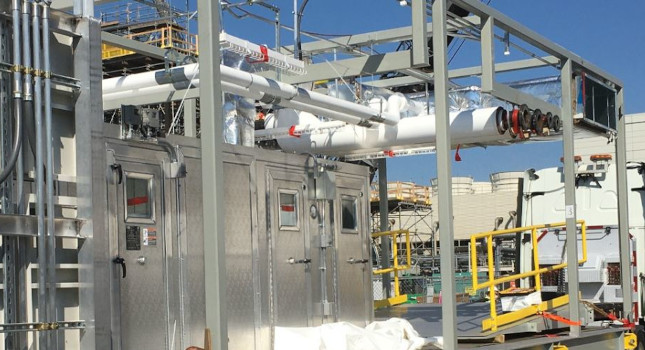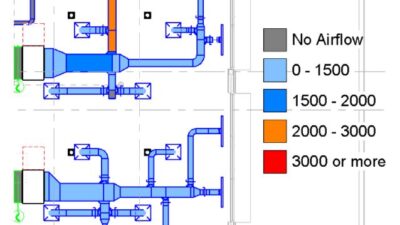The ideal state of a lean construction project is a continuous, uninterrupted workflow that is reliable and predictable.

Many of the lean construction principles directly impact the safety of workers and the hazards present on a job-site. A key element of lean construction is the elimination of waste. The areas of focus include many fundamentals that contribute to reducing hazards on the job. Improving overproduction, waiting, talent utilization, transportation, inventory control, unnecessary movement and over processing, all improve efficiency and safety. The ideal state of a lean construction project is a continuous, uninterrupted workflow that is reliable and predictable. When components are manufactured off-site and delivered on-time, the sources of inefficiency are reduced and so are the hazards.
What does modular construction mean? There are many ways that a project can take advantage of modular construction. Here are some of the examples that we use.
- iCON – Modular rooms and suites are fabricated off-site and configured to user needs.
- Skids – Mechanical systems (chillers, HVAC systems, clean in place systems, process equipment) fabricated off-site and moved into place on steel foundations.
- Floor and Ceiling Panels – Wall and floor sections built off-site and move into place as sections.
- Pipe and Duct Racks – Sections of rack containing multiple runs of pipe or duct fabricated off-site and joined together as units.
- Modular Building Shell – Entire sections of building shell fabricated off-site and assembled as units.
- Off-site Assembly – Sections of a system are assembled off-site to minimize installation time.
All of these examples of modular construction have the common benefit of reducing fabrication hours by moving the work to a controlled environment and reducing hours on-site to install complex systems. When the work is moved to the controlled environment of a shop, engineering controls can be put in place to reduce or eliminate the hazards. Here are some of the hazards that are reduced when off-site fabrication is used.
Crowding and Congestion
The global pandemic has made it difficult to manage our most important resource: people. The effect of less field staff allows us greater freedom to keep working without as much need to limit the number of people in one space. Craftsmen recognize the benefit of more room to work, less coordination with other workers for access to space, and less hazards introduced by other workers. These benefits are recognized regardless of the pandemic but at this time, the benefit of smaller field crews is especially helpful to reduce risk.
Weather
Nature has a way of interfering with plans. Winter weather can be especially difficult. The benefit of constructing systems off-site reduces the added risk to workers of exposure to extreme heat, cold, ice, snow, rain, etc. Most of our off-site construction takes place indoors, in controlled environments.
Work at Heights
Falls are the leading cause of worker fatalities in the construction industry. Off-site fabrication reduces the need for workers to climb ladders into difficult locations or don fall protection gear and move tools and materials into awkward spots. Work at heights might still be a factor for the off-site fabricator, but they are able to access their work without much of the interference of other components, building structures and other craftsmen that they would otherwise contend with. More open access and the potential for repeated controlled tasks makes fall protection much less hazardous.
Lighting
Lighting is a simple example of the type of environmental factor that can be greatly improved when fabricating a product in a controlled environment.
Ergonomics
On complex projects many times the installation requires craftsmen to install components overhead or in odd positions which may require work at odd angles, overhead, or in a position such that rigging equipment may not be able to be fully utilized. In a shop scenario many times this work can be moved to a bench or a position which puts less strain on the employee.
Hot work and fire protection
Many locations are sensitive to ignition sources. Construction in electrically classified areas where the presence of flammable or combustible gases or vapors, combustible dusts, or easily ignitable fibers may exist due to on-site processes can be avoided. Basic hot work; cutting, brazing, welding and cutting is a regular hazard that needs to be managed on a daily basis. Reducing or eliminating much of this work is a real advantage to safety on the job.
Laydown and Storage Areas
When components are fabricated off-site there is much less requirement for materials to be stored at the job-site. Trip hazards, housekeeping, combustible storage and the soft tissue damage (muscle strains and back injuries) that results from less movement of materials are reduced.
Expertise
The competent and qualified workers on a job-site are in high demand and seem to be in constant motion. Keeping them everywhere they need to be on job-site is a challenge. We count on these skilled craftsmen to be where they need to be to recognize a potential hazard before it puts a person at risk. Often, they are stretched too thin. By fabricating off-site we can rely on specialized teams that manage hazards that they are prepared for and know how to control.
As an example, on a recent project in North Carolina the IPS team constructed a modular mechanical room off-site. The providing vendor spent 25,000 hours in the shop to construct the mechanical system. The vendor then spent 2,230 hours to install the mechanical system in the field. The vendor estimates that there was a 45% saving in hours by performing the work in the shop (11,250 hours). By executing this work in a modular fashion, the project team moved more than 84% of the work hours off-site reducing employee exposure, eliminated headcount on-site during a global pandemic, and was able to complete a just in time delivery savings of over four months on the total project schedule.
Modular construction is a helpful component of executing a lean construction project. The reduced expectation of delays and costs due to safety problems is inherent in the philosophy of lean construction. Apart from the numerous efficiencies realized by off-site or modular construction, protecting our workers from injury and illness is at the top of our responsibilities. Just one more compelling reason to implement lean construction principles and modular construction.
IPS is a CFE Media content partner.



